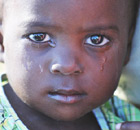-
-
China Daily E-paper
Chen Weihua
More vision for post-Expo site is needed
By Chen Weihua (China Daily)
Updated: 2010-02-02 07:04
 |
Large Medium Small |
Most bystanders passing the Shanghai Expo construction site these days might try to visualize what the area along the Huangpu River will look like on May 1 when the world extravaganza is unveiled. To me, trying to envision the area after the six-month show is no less challenging.
City planners have already mapped out a post-exposition blueprint, which includes convention and exhibition facilities, theaters, high-end commercial and apartment towers and a small park. Some deputies to the just-concluded annual session of the Shanghai Committee of the Chinese People's Political Consultative Conference, a government advisory body, proposed to turn the 5.28 sq-km site into a modern financial and trade hub.
Tapping the valuable land resources makes good business sense. In fact, much of the Shanghai Expo investment will be recouped from leasing the land to developers.
However, making good business sense may not even make sense to the 20 million Shanghai residents.
Bryant Park, across the street from my office and only a block from Time Square in midtown Manhattan, was the site of the first World's Fair in New York in 1853-54.
Nestled in a jungle of skyscrapers, the park is like a refuge of peace and calm for New Yorkers - especially nearby office workers - to socialize, eat lunch, take a walk, use Wi-Fi, take a few laps in the ski rink, play ping-pong or simply sit and think, all for free.
While bringing much pleasure to New Yorkers, it does not make much business sense in this capital of the capitalist world.
The same is true for Corona Park in the New York borough of Queens. Only a few blocks from my apartment, the 5-sq-km park, almost the same size as the Shanghai Expo site, hosted the World's Fair in 1939 and 1964.
It is now a place where everyone can play soccer or basketball and have a picnic for free. Facilities include the stadiums where the US Open tennis tournament takes place, Queens Museum of Art and New York Hall of Science. The Terrace on the Park, a banquet and catering facility built on the fair's former helipad, is probably the only spot that is for profit.
Neither Bryant Park nor Corona Park looks fancy. Yet, they both provide a vital place where New Yorkers can breathe, relax and exercise. The same is true about the 3.4-sq-km Central Park in Manhattan, which my friend said makes New Yorkers' life civilized.
Central Park is a top destination for New Yorkers with everything from music, weddings, a reservoir, a zoo to John Lennon's strawberry field and many more historic landmarks and various events.
I can imagine how a Shanghainese would be desperate for parks and free public sports venues in a city of concrete jungle that is getting denser by every passing day. Building more monstrous structures, skyscrapers, theaters and convention centers should not be a top priority if you just ask ordinary Shanghainese on the street.
The Expo Park that has been widely lauded and will be preserved is only 0.23 sq km, slightly bigger than two downtown People's Parks. Everything else in the post-Expo site would just be too upscale for ordinary Shanghainese, let alone the millions of migrant workers in the city.
If "Better City, Better Life" is the goal that Shanghai Expo is striving for, the post-Expo site should look more like Bryant Park or Corona Park, rather than just a commercially successful community.
Making a decision that makes no business sense is a tough job. But it takes exactly that kind of a tough decision to live up to the Expo motto and leave a long-lasting legacy that could be felt by every Shanghainese and millions of migrant workers.
E-mail: chenweihua@chinadaily.com.cn
(China Daily 02/02/2010 page8)









